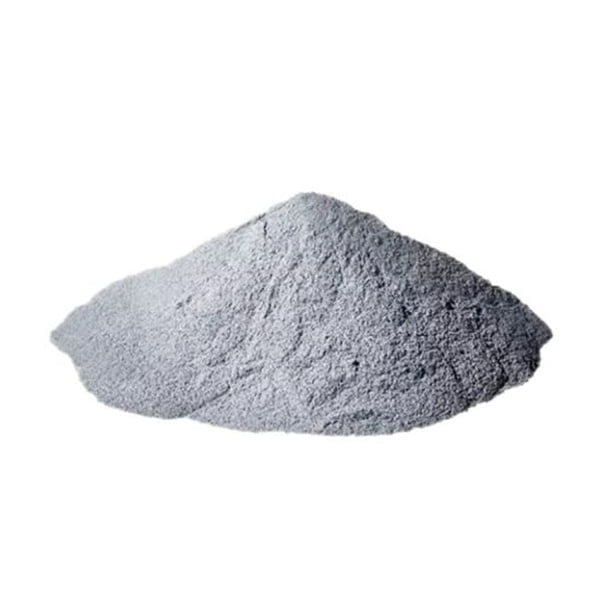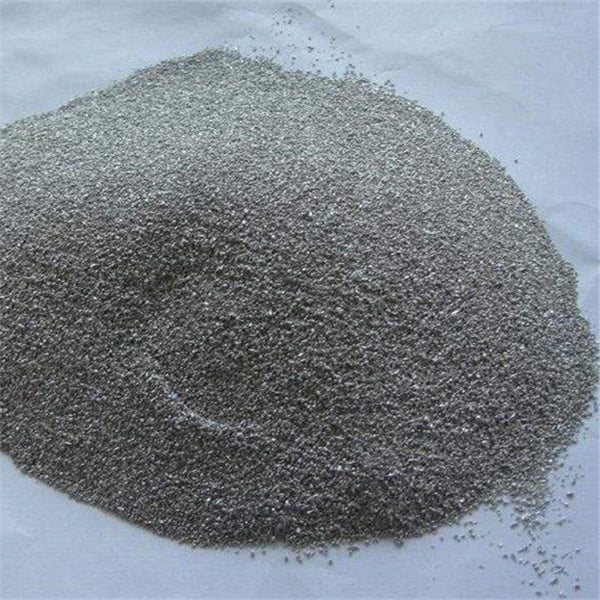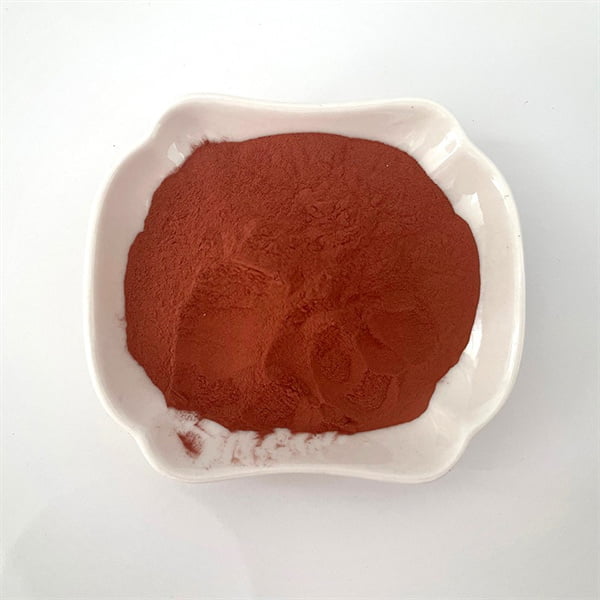7075 aluminum powder for SLM
Table of Contents
Additive manufacturing, also known as 3D printing, has revolutionized the way we design and produce complex parts. Selective laser melting (SLM) is a powerful 3D printing technique that uses a laser beam to selectively melt metal powder layer by layer, building a three-dimensional object from a digital blueprint.
Choosing the right metal powder for SLM is crucial for achieving the desired mechanical properties, surface finish, and overall success of the printed part. Among the various metal powders available, 7075 aluminum stands out as a popular and versatile option for SLM applications.
This comprehensive guide dives deep into the world of 7075 aluminum powder for SLM, exploring its properties, benefits, limitations, and various available models.
the Composition and Properties of 7075 Aluminum Powder
7075 aluminum is a high-strength aluminum alloy widely used in aerospace, automotive, and other demanding applications. Its exceptional strength-to-weight ratio makes it ideal for lightweight yet robust components.
Here’s a breakdown of the key components and properties of 7075 aluminum powder for SLM:
Composition:
- Aluminum (Al): Primary element, constituting around 90% of the powder.
- Zinc (Zn): Improves strength and corrosion resistance (around 5-6%).
- Magnesium (Mg): Enhances strength and helps prevent cracking (around 2-3%).
- Copper (Cu): Contributes to strength and improves machinability (around 1-2%).
- Minor elements: Silicon (Si), Manganese (Mn), Iron (Fe), and Chromium (Cr) are present in smaller quantities, influencing specific properties.
Properties:
- High Strength: Offers excellent tensile strength and yield strength, making it suitable for load-bearing applications.
- Good Corrosion Resistance: Provides adequate resistance to corrosion thanks to the presence of zinc and magnesium.
- Lightweight: Significantly lighter than steel or other metals, offering weight savings in critical applications.
- Weldability: Can be welded using appropriate techniques, allowing for post-processing and joining of printed parts.
- Machinability: Offers good machinability for creating features and tolerances that may not be achievable with SLM alone.

Popular 7075 Aluminum Powder Models
The world of metal powders for SLM is vast, with various manufacturers offering specific models tailored to optimize different aspects of the printing process. Here’s a closer look at ten prominent 7075 aluminum powder models:
| Model Name | Manufacturer | Description |
|---|---|---|
| AMSL-7075 | EOS GmbH | A well-established powder known for its good flowability and printability, leading to high-density parts. |
| SLM 125 | SLM Solutions | Offers a balance between strength and ductility, making it suitable for a wide range of applications. |
| AP7075 | Renishaw plc | Engineered for excellent surface finish and dimensional accuracy, ideal for parts requiring a high aesthetic appeal. |
| AlSi10Mg | ExOne GmbH | This variant incorporates a small amount of silicon (Si) to improve laser absorption and potentially reduce cracking. |
| ProLaser 7075 | GE Additive | Boasts high powder purity and tight particle size distribution for consistent printing results. |
| MCP 7075 | Trumpf GmbH + Co. KG | Developed for use with Trumpf machines, this powder offers good printability and mechanical properties. |
| AEROSPACE 7075 | Sandvik Additive Manufacturing | Tailored for the aerospace industry, this powder prioritizes high strength and fatigue resistance. |
| SLM 7075 | DMG Mori Co., Ltd. | A versatile option suitable for various applications, offering a good balance between performance and cost. |
| Element 7075 | Carpenter Additive Manufacturing | Known for its excellent powder flowability and minimal spatter during printing, leading to a cleaner printing process. |
| SLM 7075.M | SLM Materials | This model boasts a spherical morphology and tight particle size distribution, promoting optimal laser coupling and printability. |
Please note: This table provides a general overview, and specific properties and availability may vary depending on the manufacturer and region. It’s crucial to consult the technical datasheets of each powder model for detailed information.
Applications of 7075 Aluminum Powder for SLM
The exceptional properties of 7075 aluminum powder for SLM translate into a vast array of applications across different industries. Here are some key areas where 7075 aluminum shines in the world of SLM:
- Aerospace: The high strength-to-weight ratio and good fatigue resistance make 7075 aluminum ideal for creating lightweight yet robust aircraft components like brackets, housings, and structural elements. Imagine a fighter jet soaring through the sky, its wings containing intricate parts additively manufactured from 7075 aluminum, saving precious weight without sacrificing strength.
- Automotive: The automotive industry is constantly pushing for lighter vehicles to improve fuel efficiency. 7075 aluminum SLM finds application in manufacturing components like suspension parts, brake calipers, and even intricate engine components. Think of a sleek electric car speeding down the highway, its lightweight chassis incorporating parts additively manufactured from 7075 aluminum, contributing to a longer driving range.
- Robotics: Robots require strong and lightweight components for precise movement. 7075 aluminum SLM is used to create robotic arms, grippers, and other intricate parts that enhance a robot’s dexterity and efficiency. Picture a robotic arm in a factory, its metallic fingers, additively manufactured from 7075 aluminum, swiftly assembling complex products with unmatched precision.
- Medical Devices: The biocompatible nature of aluminum, combined with its strength and machinability, makes 7075 aluminum SLM suitable for certain medical implants and devices. Think of a prosthetic leg, its internal components additively manufactured from 7075 aluminum, offering a robust and lightweight structure to support an active lifestyle.
- Defense: Military applications often demand strong and corrosion-resistant materials. 7075 aluminum SLM is used to create components for firearms, military vehicles, and other defense equipment. Imagine a soldier on the battlefield, wielding a firearm whose lightweight and durable parts were additively manufactured from 7075 aluminum, providing a tactical advantage.
Beyond these core applications, 7075 aluminum SLM finds its way into various other sectors, including:
- Consumer electronics: For lightweight and robust components like heat sinks and structural elements.
- Oil and gas: For creating corrosion-resistant parts for drilling equipment and downhole applications.
- Marine: For components used in shipbuilding and maritime applications requiring a balance of strength and weight.
The versatility of 7075 aluminum powder for SLM makes it a valuable tool for engineers and designers to push the boundaries of innovation across diverse industries.
the Advantages of 7075 Aluminum Powder for SLM
While numerous metal powders exist for SLM, 7075 aluminum stands out due to its unique set of advantages:
- High Strength: Offers exceptional tensile and yield strength, enabling the creation of robust parts for demanding applications. Compared to other aluminum alloys used in SLM, 7075 offers a significant strength advantage.
- Lightweight: Significantly lighter than steel or other metals, 7075 aluminum SLM parts contribute to weight reduction in critical applications. Imagine an airplane wing – every gram saved translates to improved fuel efficiency and longer flight range.
- Good Corrosion Resistance: The presence of zinc and magnesium provides adequate protection against corrosion, making it suitable for various environments. This is particularly crucial for applications like marine components or parts exposed to harsh weather conditions.
- Weldability: Can be welded using appropriate techniques, allowing for post-processing and joining of printed parts. This flexibility is valuable for creating complex structures or repairing imperfections in printed parts.
- Machinability: Offers good machinability, enabling the creation of features and tolerances that may not be achievable with SLM alone. This allows for fine-tuning the final dimensions and surface finish of printed parts.
- Established Material: 7075 aluminum is a well-understood and widely used material, with extensive data and experience available for engineers and designers. This established track record inspires confidence when incorporating 7075 aluminum SLM into projects.
These advantages make 7075 aluminum powder for SLM a compelling choice for a broad spectrum of applications, from high-performance aerospace components to lightweight consumer electronics.
the Limitations of 7075 Aluminum Powder for SLM
Despite its numerous advantages, 7075 aluminum powder for SLM does have limitations to consider:
- Susceptibility to Cracking: The high strength of 7075 aluminum can make it more prone to cracking during the SLM process compared to some other aluminum alloys. This is because the rapid heating and cooling cycles inherent in SLM can induce residual stresses within the printed part. These stresses, if not managed effectively through optimized printing parameters and post-processing techniques, can lead to cracks.
- Higher Laser Power Requirements: Compared to some other metal powders, 7075 aluminum requires a higher laser power for effective melting due to its higher melting point. This can translate to increased energy consumption and potentially higher operating costs for SLM machines.
- Surface Roughness: SLM-printed parts from 7075 aluminum may exhibit a slightly rougher surface finish compared to some other materials. While post-processing techniques like machining can improve surface finish, it’s important to factor in the additional processing steps required.
- Cost: While not the most expensive metal powder for SLM, 7075 aluminum can be more costly compared to some other commonly used aluminum alloys. This cost factor needs to be weighed against the performance benefits it offers for the specific application.
Understanding these limitations allows users to make informed decisions about whether 7075 aluminum powder is the optimal choice for their SLM project. By carefully considering the application requirements and employing appropriate printing strategies, these limitations can be mitigated to a significant extent.

Specifications, Sizes, Grades, and Standards
Selecting the most suitable 7075 aluminum powder model for your SLM project requires a clear understanding of the available specifications, sizes, grades, and relevant standards.
Key Specifications:
- Particle Size Distribution: This refers to the range of sizes of the powder particles. A narrow particle size distribution promotes optimal powder flowability, leading to more consistent printing results.
- Sphericity: The ideal powder particles are spherical in shape. This ensures good packing density and minimizes voids within the printed part, leading to improved mechanical properties.
- Flowability: The powder’s ability to flow freely is crucial for even layer deposition during the SLM process. Good flowability minimizes the risk of feeding problems and ensures consistent printing quality.
- Oxygen Content: Low oxygen content in the powder is essential to prevent oxidation during the laser melting process, which can negatively impact the mechanical properties of the printed part.
Available Sizes:
7075 aluminum powder for SLM is typically offered in a range of particle sizes, commonly between 15 microns and 50 microns. The specific size chosen depends on the desired surface finish, mechanical properties, and the capabilities of the SLM machine being used.
Grades:
Several grades of 7075 aluminum powder may be available, depending on the manufacturer. These grades may differ in terms of their chemical composition, specifically the trace element content. The chosen grade can influence factors like printability, mechanical properties, and post-processing requirements.
Standards:
Metal powders for SLM are subject to various industry standards that ensure consistent quality and performance. Common standards for 7075 aluminum powder include ASTM B294 and EN AC43607. Using powders that comply with these standards helps ensure predictable printing results and reliable part quality.
By carefully considering these factors, users can select the 7075 aluminum powder model that best aligns with the specific needs of their SLM project. Consulting with the powder supplier and referring to the technical datasheets of each powder model is crucial for making an informed decision.
Comparing Pros and Cons of 7075 Aluminum Powder for SLM
To make a well-rounded decision, it’s essential to weigh the pros and cons of 7075 aluminum powder for SLM:
Pros:
- High Strength: Offers exceptional strength for demanding applications.
- Lightweight: Significantly reduces weight compared to other metals.
- Good Corrosion Resistance: Provides adequate protection against corrosion.
- Weldability: Allows for post-processing and joining of printed parts.
- Machinability: Enables creation of intricate features and improved surface finish.
- Established Material: Well-understood material with extensive data available.
Cons:
- Susceptibility to Cracking: Requires careful printing parameter optimization to minimize cracking risks.
- Higher Laser Power Requirements: May increase energy consumption during printing.
- Surface Roughness: May exhibit a slightly rougher surface finish compared to some materials.
- Cost: Can be more expensive than some other commonly used aluminum alloys.
Costs and Suppliers of 7075 Aluminum Powder for SLM
The cost of 705 aluminum powder for SLM can vary depending on several factors, including:
- Powder Model: Specific features and properties of different models can influence the price. Powders with tighter particle size distribution or higher purity may command a premium.
- Manufacturer: Brand reputation and established track record can affect pricing.
- Quantity: Bulk purchases typically offer lower per-unit costs compared to smaller quantities.
- Location: Geographic location and regional supply chain dynamics can impact pricing.
While providing specific pricing is difficult due to these fluctuating factors, here’s a general range to provide a sense of scale:
- Price Range: The cost of 7075 aluminum powder for SLM typically falls between $50 and $200 per kilogram.
Here’s a table outlining some prominent suppliers of 7075 aluminum powder for SLM:
| Supplier | Website |
|---|---|
| EOS GmbH | https://www.eos.info/en-us/about-us/locations-worldwide |
| SLM Solutions GmbH | https://nikon-slm-solutions.com/ |
| Renishaw plc | https://www.renishaw.com/en/energy–39161 |
| ExOne GmbH | https://www.exone.com/ |
| GE Additive | https://www.ge.com/additive/ |
| Trumpf GmbH + Co. KG | https://www.trumpf.com/ |
| Sandvik Additive Manufacturing | https://www.additive.sandvik/en/ |
| DMG Mori Co., Ltd. | https://www.dmgmori.co.jp/en/ |
| Carpenter Additive Manufacturing | https://ir.carpentertechnology.com/overview/default.aspx |
| SLM Materials | https://www.slm-solutions.com/company/about-us/ |
It’s highly recommended to contact these suppliers directly for current pricing and availability information. Additionally, some online marketplaces and metal powder distributors may offer 7075 aluminum powder for SLM. It’s crucial to ensure these vendors provide high-quality powders with proper certifications to guarantee successful printing results.

FAQ
Here are some frequently asked questions (FAQ) regarding 7075 aluminum powder for SLM:
Q: What are the typical applications of 7075 aluminum powder for SLM?
A: 7075 aluminum powder for SLM finds application in various industries, including aerospace, automotive, robotics, medical devices, and defense. It’s particularly suited for applications requiring a balance of high strength, lightweight design, and good corrosion resistance.
Q: Can 7075 aluminum powder for SLM be post-processed?
A: Yes, 7075 aluminum parts printed via SLM can be post-processed using techniques like heat treatment, machining, and surface finishing. These processes can further enhance the mechanical properties, dimensional accuracy, and surface aesthetics of the printed parts.
Q: How does 7075 aluminum powder for SLM compare to other aluminum alloys used in SLM?
A: 7075 aluminum offers superior strength compared to some other commonly used aluminum alloys for SLM. However, it may be more susceptible to cracking and require higher laser power for melting. The choice between different aluminum alloys depends on the specific application requirements and desired properties.
Q: What safety precautions should be taken when handling 7075 aluminum powder for SLM?
A: 7075 aluminum powder can be flammable and pose inhalation risks. It’s crucial to follow proper safety protocols when handling this powder, including using appropriate personal protective equipment (PPE) like gloves, respirators, and safety glasses. Additionally, proper ventilation and housekeeping practices are essential in the SLM printing environment.
Share On
MET3DP Technology Co., LTD is a leading provider of additive manufacturing solutions headquartered in Qingdao, China. Our company specializes in 3D printing equipment and high-performance metal powders for industrial applications.
Inquiry to get best price and customized Solution for your business!
Related Articles
About Met3DP
Recent Update
Our Product
CONTACT US
Any questions? Send us message now! We’ll serve your request with a whole team after receiving your message.

Metal Powders for 3D Printing and Additive Manufacturing
COMPANY
PRODUCT
cONTACT INFO
- Qingdao City, Shandong, China
- [email protected]
- [email protected]
- +86 19116340731

















